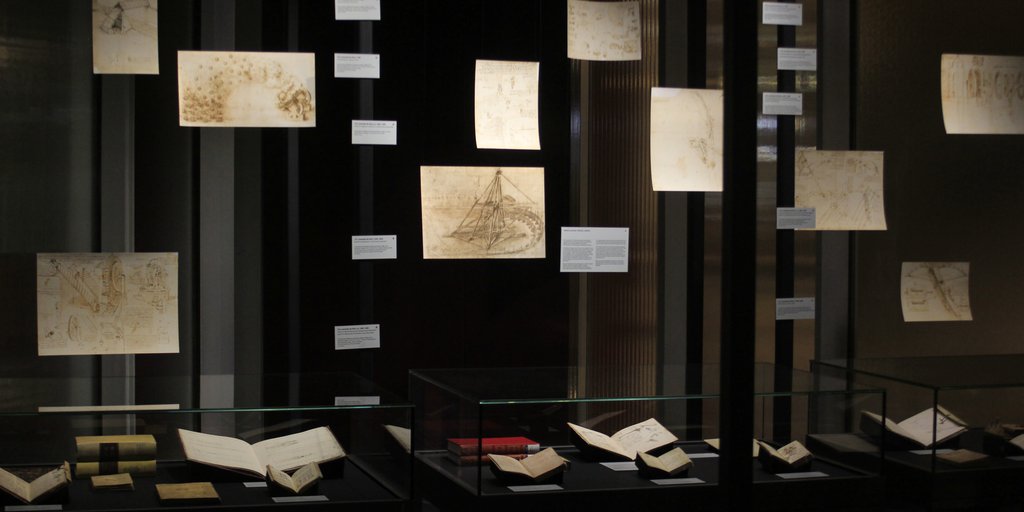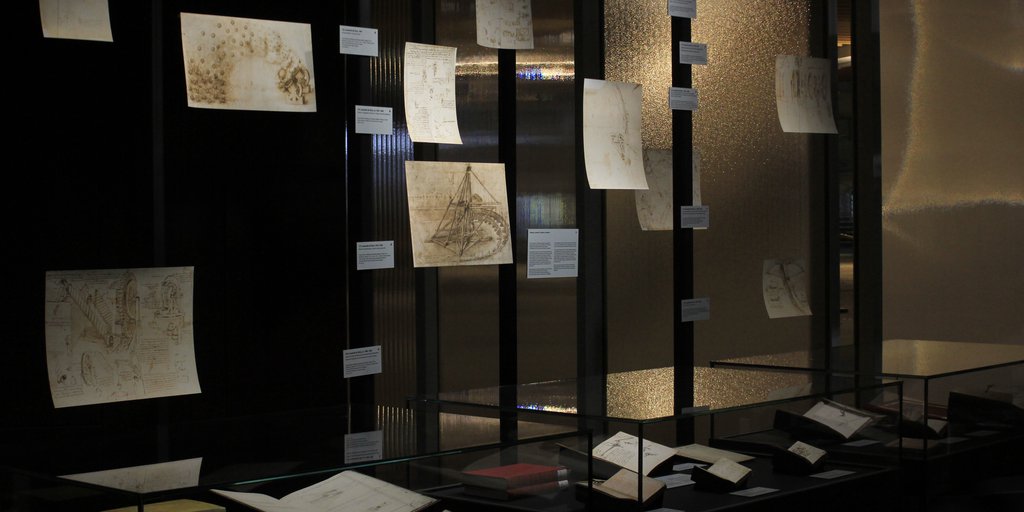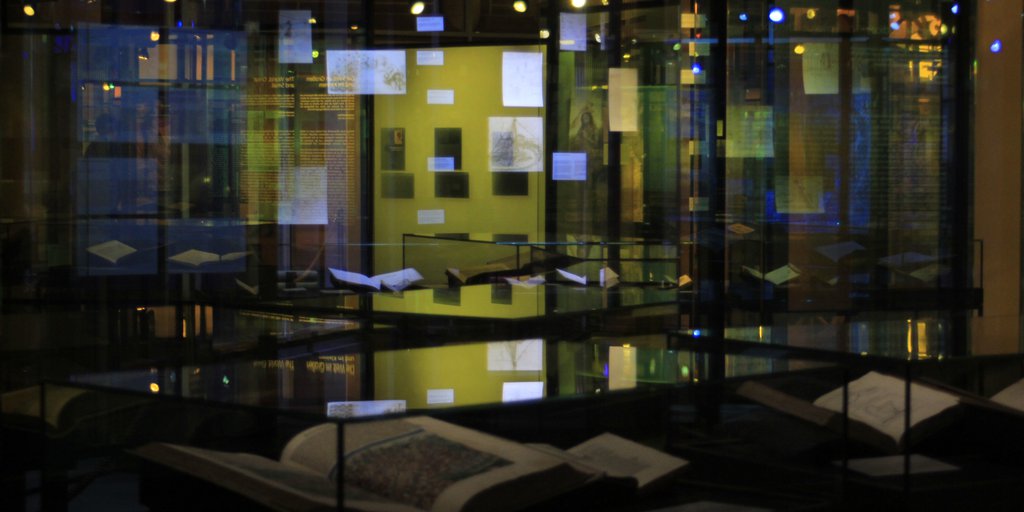
Epilogue: The Codices <
This is a collection without order, compiled from many papers that I have copied here,
hoping to put them in their respective order, according to the subjects they address …
Leonardo da Vinci
Codex Arundel, fol. 1r. Translation: Elizabeth Hughes
Leonardo’s surviving literary estate comprises over 4,000 sheets; a total of 22 volumes of illustrated manuscripts, generally known as codices, still exists today. The material is extremely heterogenous. Alongside pocket-sized sketchbooks with jottings made on the spot purely for his own use, there are large-format clean copies that seem to address an audience. What the volumes have in common is their thematic diversity, and all show traces of continual use and revision. At his death, Leonardo left the volumes to his collaborator and heir Francesco Melzi (1491/92–1567). Melzi’s heirs sold a large part of this legacy to the sculptor Pompeo Leoni (ca. 1533–1608). In 1637 the collector Galeazzo Arconati (before 1592–1649) donated several of these manuscripts to the Biblioteca Ambrosiana in Milan. They ultimately reached Paris as part of Napoleon’s spoils of war where most of them are still kept today—fortunately mostly in their original binding. Other codices took entirely different paths—though under similarly dramatic circumstances.
Atlanticus, Scattered <
Der erst seit dem 18. Jahrhundert wegen seines großen, Atlas-ähnlichen Formates so bezeichnete Codex Atlanticus (Biblioteca Ambrosiana, Mailand) ist das früheste Sammleralbum mit Zeichnungen und Notizen Leonardos. Der Bildhauer Pompeo Leoni, der auch einen großen Teil von Leonardos gebundenen Manuskripten erworben hatte, stellte es aus mehr als 1700 einzelnen Zeichnungen und Blättern unterschiedlicher Größe und Entstehungszeit (von 1478 bis 1518) zusammen, die er auf riesige Bögen aufklebte. Der Titel des ursprünglichen Ledereinbandes lautet übersetzt: „Zeichnungen von Maschinen und geheimen Künsten und anderen Dingen des Leonardo da Vinci“. Nach mehreren Restaurierungskampagnen wurde das Album 2008/09 schließlich endgültig aufgelöst. Heutigen konservatorischen Standards entsprechend werden die Zeichnungen seitdem einzeln in Passepartouts aufbewahrt.
Literatur
- 118.
Exploded-view drawing of a gear train
1478–1480
- 119.
Systems for drawing water (bucket chain, Archimedean screw)
ca. 1480–1482
- 120.
Systems for drawing water (Archimedean screw, water wheels)
ca. 1480–1482
- 121.
Siege engine
ca. 1480
- 122.
Giant crossbow
1485–1492
- 123.
Shrapnel mortar
1485
- 124.
Studies for the domed crossing tower (tiburio) of Milan Cathedral
1487–1488
- 125.
Studies of aircraft (parachute)
.ca. 1487–1490
- 126.
Studies on mechanics (printing press, gear drive)
.ca. 1497
- 127.
Crane for canal construction
.1503–1504
 | 118.
Exploded-view drawing of a gear train 1478–1480 |

The Codex Atlanticus, which has been known by this title since the 18th century because of its large, atlas-type format, is the earliest collector’s album with Leonardo’s drawings and notes. The sculptor Pompeo Leoni, who had purchased a large part of Leonardo’s bound manuscripts, compiled it from over 1,700 individual drawings and sheets of different sizes made on various dates from 1478 to 1518. Leoni stuck them onto huge sheets of paper. The English translation of the title of the original leather-bound volume is “Drawings of Machines and Secret Arts and Other Things by Leonardo da Vinci Compiled by Pompeo Leoni.” After several major attempts at restoration, the album was finally dismantled in 2008/09. The drawings are now kept in individual picture mounts in line with today’s conservation standards.
References
Bambach, Carmen C. 2019. Leonardo da Vinci Rediscovered. Vol. 3: The Late Years 1506–1519. 4 vols. New Haven / London: Yale University Press, 612–617.
Barberi, Francesco. 1982. “Il restauro del Codice Atlantico di Leonardo da Vinci.” Accademie e Biblioteche d’Italia 50 (2): 98–111.
Marinoni, Augusto. 1982. “Sul restauro del Codice Atlantico.” Raccolta Vinciana 21: 9–20.










